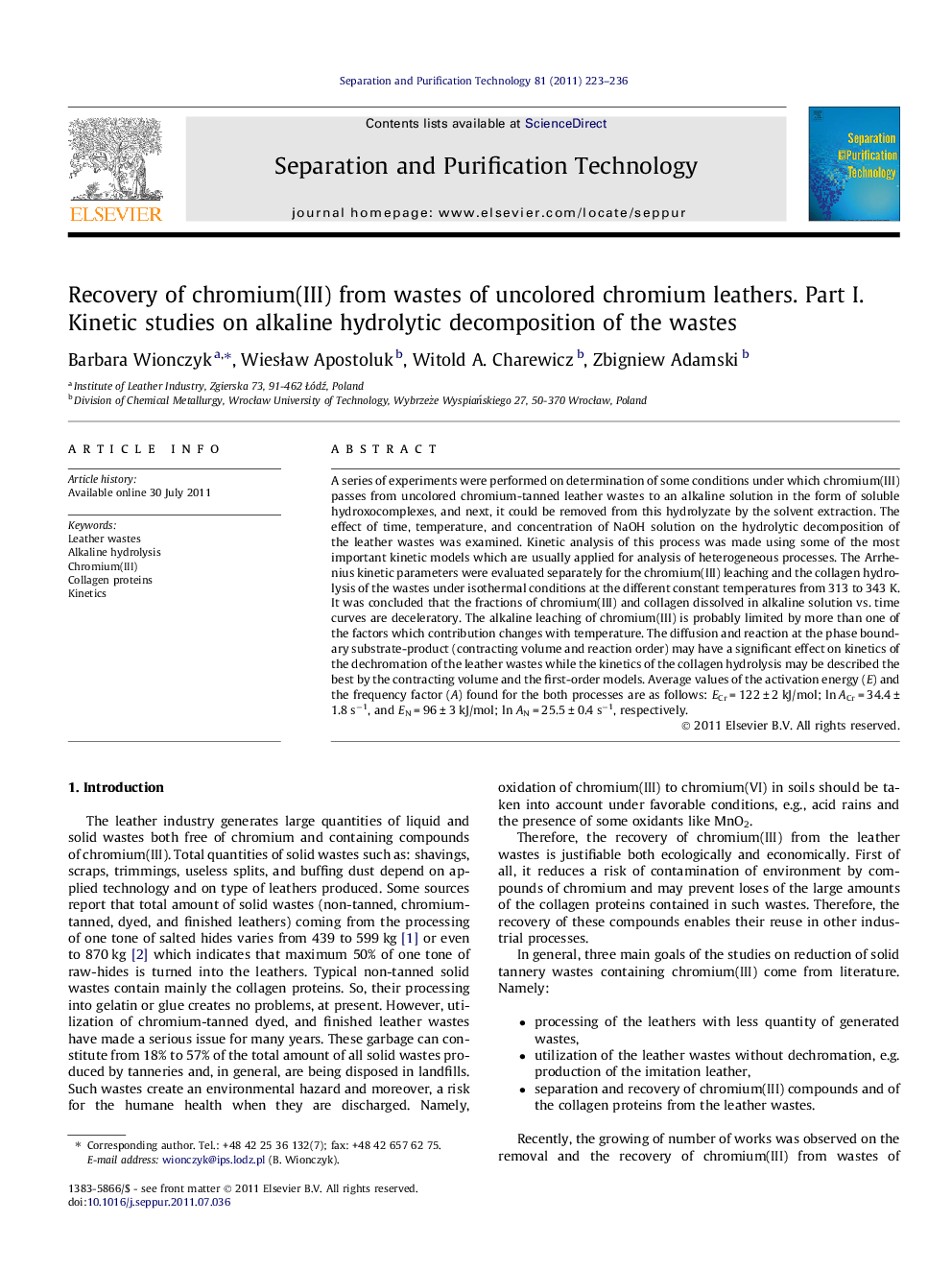| Article ID | Journal | Published Year | Pages | File Type |
|---|---|---|---|---|
| 642550 | Separation and Purification Technology | 2011 | 14 Pages |
A series of experiments were performed on determination of some conditions under which chromium(III) passes from uncolored chromium-tanned leather wastes to an alkaline solution in the form of soluble hydroxocomplexes, and next, it could be removed from this hydrolyzate by the solvent extraction. The effect of time, temperature, and concentration of NaOH solution on the hydrolytic decomposition of the leather wastes was examined. Kinetic analysis of this process was made using some of the most important kinetic models which are usually applied for analysis of heterogeneous processes. The Arrhenius kinetic parameters were evaluated separately for the chromium(III) leaching and the collagen hydrolysis of the wastes under isothermal conditions at the different constant temperatures from 313 to 343 K. It was concluded that the fractions of chromium(III) and collagen dissolved in alkaline solution vs. time curves are deceleratory. The alkaline leaching of chromium(III) is probably limited by more than one of the factors which contribution changes with temperature. The diffusion and reaction at the phase boundary substrate-product (contracting volume and reaction order) may have a significant effect on kinetics of the dechromation of the leather wastes while the kinetics of the collagen hydrolysis may be described the best by the contracting volume and the first-order models. Average values of the activation energy (E) and the frequency factor (A) found for the both processes are as follows: ECr = 122 ± 2 kJ/mol; ln ACr = 34.4 ± 1.8 s−1, and EN = 96 ± 3 kJ/mol; ln AN = 25.5 ± 0.4 s−1, respectively.
► We establish conditions of alkaline decomposition of chromium-tanned leather wastes. ► Then 90% of Cr(III) is leached from wastes as soluble hydroxocomplexes. ► Collagen of leather wastes is dissolved completely in alkaline solution. ► We discuss kinetic behavior of Cr leaching and collagen hydrolysis of leather wastes. ► Arrhenius parameters of both ones using models of heterogeneous process are found.
